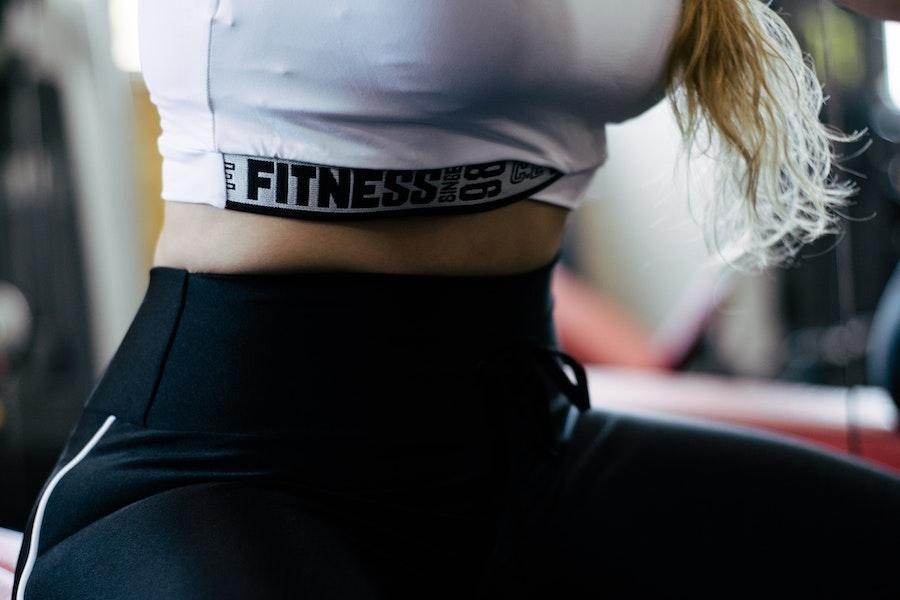2023 sees the return of the great outdoors, and the fashion industry must keep up with this development. There’s a shift from comfortable loungewear to activewear. However, comfort is still a major driving factor for consumer purchases.
Fortunately, most active materials focus on functionality and durability mixed with comfort to give consumers an enjoyable outdoor experience. These activewear trends also add style to the mix, giving consumers the best of both worlds.
This article will break down the top active material trends for Spring and Summer 2023. Let’s start with an overview of the active material market.
Table of Contents
The active materials market in 2023
Active materials that consumers will love in 2023
Final words
The active materials market in 2023
The global clothing fibers market accumulated US $206.8 billion in revenue in 2021. Experts predict the industry will hit US $289.28 billion by 2030. They also expect it to grow at a compound annual growth rate (CAGR) of 3.8% over the forecast period.
Naturally, the active material segment shares the global market’s phenomenal size. Rising demand for activewear for various outdoor and sporting activities is a dominant factor contributing to this segment’s growth. Consumers are gravitating towards breathability, chemical, thermal, and static resistance.
Active materials that consumers will love in 2023
Weathered jersey

Weathered jerseys allow a look with soft brushed surfaces that evokes the summer spirit. Whether consumers look towards spending time in the sun, sand, or sea, these active materials will provide summer looks fit for the occasion.
Sustainable cotton and FSC-certified cellulosic fibers are suitable materials adequate to produce weathered jerseys. Layers of antibacterial treatments help minimize washes and prolong the life expectancy of weathered jerseys.
This activewear material employs undyed fabric or botanical dyes to help keep a natural look and feel. Weathered jerseys are great for basic activewear with multifunctional and trans-seasonal capabilities. They make impressive apparel for training, lounging, yoga, and all-day performance activities.
Staples compatible with weathered jersey materials include long-sleeve and short-sleeve tops. It can easily replicate a luxurious feel, especially when paired with good-quality fibers.
Micro-fleece
Although it is already an outdoor staple, this active material enjoys a smoother and more refined update this season. Micro-fleece shows high compatibility with biodegradable materials helping to cut down microfiber pollution.
Soft and breathable are words that perfectly describe this material. Its pill resistance and quick-dry qualities further drive the fleece as a summer activewear staple.
Micro-fleece is the perfect material for mid-layers and outerwear. It makes fantastic jackets and cardigans that will protect wearers from chilly conditions. Micro-fleece is also compatible with eco-friendly ripstop, which helps to reinforce areas requiring high durability.
This active material can also integrate retro-style blocking to create street-inspired and retro looks. Upcycled or deadstock fleece can make some interesting color-blocked pieces when added to micro-fleece apparel.
Micro-fleece activewear is outstanding for various S/S outdoor activities. It is also practical for all-day active and streetwear outfits. Products like turtlenecks and hoodies look splendid in micro-fleece. Micro-fleece skirts are also phenomenal as activewear.
Refined weatherproofing
Performance materials simply can’t exist without some essence of weatherproofing. It’s now crucial to update activewear materials with refined weatherproofing as consumers will depend on them for protection.
Some innovations introduce lightweight three-layer fabrics from recyclable or recycled polyamides featuring incredible breathability and mechanical stretch capabilities.
Refined weatherproofing demands the use of lightweight, breathable, and waterproof materials. Waxed cotton is an excellent weatherproof material compatible with activewear. This densely woven fabric has a paraffin-based wax coating, which gives it adequate water resistance.
Nylon and polyester are other lightweight and breathable materials with refined weatherproofing. Though these materials are not weatherproof on their own, their tight weaves can make them water-resistant. But they can become incredibly weatherproof with a special coating.
Polyester fleece also provides some weatherproof qualities. Denser fleece materials often have high water repellency. This material can boast even more water resistance with specially applied water-repellent coating. Hoodies, jackets, and long sleeves are some top items perfect with polyester fleece.
Refined waterproofing is ideal for outerwear but it doesn’t stop there. It also makes an impact in trousers and shorts, making them perfect for hikes on all kinds of terrain. Refined waterproof active materials create effective wear for golf, running, cycling, and outdoor activities.
Engineered hybrids
Sometimes, hybrid creations offer the best materials for activewear. Engineered hybrids combine ventilation, compression, and waterproofing into one material. They also blend various fibers and zones to create one fabric length.
Most engineered hybrid materials offer maximum performance and comfort while removing the need for seams. Some engineered hybrids mix soft stretchy sections and water-tight areas into a single fabric.
Circular knitting and fiber construction can create more eco-friendly hybrids with lower impact–unlike chemical finishes. For example, jacquard hybrids combine merino and unique polyamide to make various pieces. The polyamide in the fabric poses zero threats as it fully degrades within three years.

Engineered hybrids can easily maintain sustainable performance by mixing low-impact solutions. They can support garments that need a combination of waterproofing, breathability, and extra support. These active materials are ideal for running, outdoors, cycling, and tennis apparel.
Enhanced naturals
Natural fibers like merino and hemp will also receive fresh updates that move them to new performance levels. Enhancing raw materials involves combining them with sustainable synthetics to make them more activewear appropriate.
Hemp black is an example of such innovation. The making process of this enhanced material involves using advanced seed genetics and odor-eliminating hemp fused with eco-friendly polymers. Combining the results with antimicrobial copper-embedded fibers completes the process and enhances the natural hemp to a new performance level.
Biodegradable synthetics are crucial to these active materials. Using unchanging synthetics would compromise the fabric’s end-of-life degradation. However, businesses can harness the benefits of natural fibers combined with eco-synthetics, providing better stretch and machine washability.

Enhanced materials like a wool-blend for cycling shirts provide versatile pieces consumers can wear on and off a bike. Other activities compatible with enhanced naturals include all-day active, outdoor, and yoga activities.
These material blends make some of the best active outerwear, including button-woven shirts, zip-up hoodies, and long sleeves. They also go beyond outerwear and infiltrate bottoms in the form of yoga pants and shorts.
Final words
2023 will motivate the drive towards more sustainable fabrics. Active material innovations are key to developing updated activewear. More trends are shifting away from toxic chemical treatments, finishes, and virgin synthetics to meet consumer demands for eco-friendly solutions.
Enhanced natural innovations will significantly improve nature’s ecosystems with safe synthetics that biodegrade safely. Weathered jerseys and refined waterproof materials help avoid active washing with moisture-wicking and smell-absorbing qualities.
Enhanced hybrids and micro-fleece lean toward increased functionality and comfortable apparel. These are the top material trends businesses need to find their spot in S/S 2023’s crowded activewear market.




